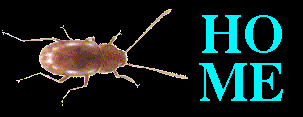|
Biospeleology of the Piemonte |
 |
Systematic Photographic |
|
Biospeleology of the Piemonte |
 |
Systematic Photographic |
 |
|
|
|
 |
 |
 |
 |
 |
 |
|
|
|
|
|


TECHNICAL CARD Lower Camoscere Cave (105 Pi/CN)
|
Commune: |
Chiusa Pesio, |
Valley: |
Pesio |
|
|
Mons: |
Labiaia Mirauda |
Map I.G.M.: |
91 IV SE Certosa di Pesio |
|
|
Coordinates: |
UTM LP 9296 9698 |
Quota: |
1100 m a.s.l. |
|
|
Length: |
1000 m |
Difference in level: |
+107 m |
|
|
Lithotype: |
Jurassic marble limestones |
|||
SCHEDA TECNICA Grotta superiore delle Camoscere (250 Pi/CN)
|
Commune: |
Chiusa Pesio, |
Valley: |
Pesio |
|
|
Mons: |
Labiaia Mirauda |
Map I.G.M.: |
91 IV SE Certosa di Pesio |
|
|
Coordinates: |
UTM LP 9265 9690 |
Quota: |
1140 m a.s.l. |
|
|
Length: |
24 m |
Difference in level: |
-14 m |
|
|
Lithotype: |
Jurassic marble limestones |
|||

This caves opens on the slopes of the Mons Labiaia Mirauda that has some little cavities in altitude, which resurgence is the Lower Cave.
The lower Cave, from the biospeleological point of view, is known since the nineteenth century because of the presence of a troglobite insect Coleoptera Trechinae of which the cavity is the locus typicus. This Trechinae is Agostinia launoi![]() , the most specialized Carabidae (to the hypogean life) of the Piemonte. More renowned for the presence of this species is the higher Camoscere Cave(250 Pi/CN) from which come most of the specimens of Agostinia.
, the most specialized Carabidae (to the hypogean life) of the Piemonte. More renowned for the presence of this species is the higher Camoscere Cave(250 Pi/CN) from which come most of the specimens of Agostinia.
In the Camoscere Caves lives also Duvalius carantii
Among the Araneae we can indicate the presence of Troglohyphantes rupicapra![]() , troglobite spider; among the Diplopoda, Crossosoma cavernicola
, troglobite spider; among the Diplopoda, Crossosoma cavernicola![]() , belonging to a genus of higly specialized centipedes that share this habitat with another less specialized Diplopoda: Plectogona
, belonging to a genus of higly specialized centipedes that share this habitat with another less specialized Diplopoda: Plectogona![]() vignai vignai and moreover the eutroglophile Opiliones Holoscotolemon oreophilum
vignai vignai and moreover the eutroglophile Opiliones Holoscotolemon oreophilum![]() .
.
Recently (november 1999) the author has contribute to the exploration of a series of little cave situated at higher quota on the slopes of the Mons Mirauda than the two citated Camoscere Caves; this cavities has been called GP1¸7. In one of these, the deepest, the author found a species of Diplopoda Glomeridae not previously citated and also for Agostinia launoi there are good possibilities, if searched in the right season.

 |
 |
 |
 |
 |
BIBLIOGRAPHY |
BIBLIOGRAPHY |
BIBLIOGRAPHY |



|
Return to the page "Caves" |
|




Some embellishments, Javascript, etc. have been modified
from them situated on the site 
"A SBAFO! All for the WEB gratis and in
Italian... "; the author advise you to visit it.




